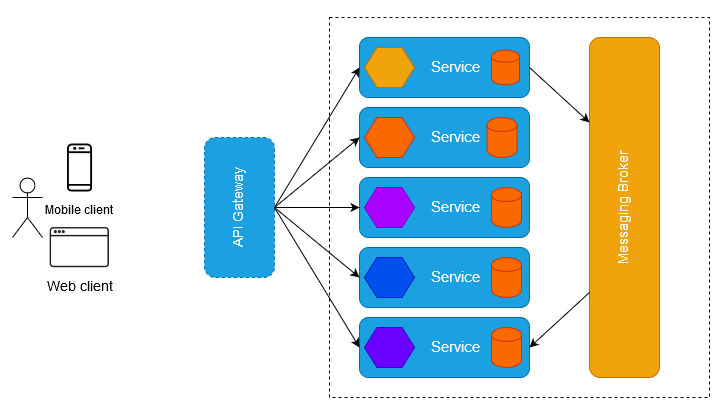In a microservices architecture, services are fine-grained and the protocols are lightweight. The microservice architecture pattern language is a collection of patterns for applying the microservice architecture. Partitioning into services can change over time and should. The pattern language enables you to use the microservice architecture successfully. It is a software engineering approach which focuses on decomposing an application into single-function modules with well-defined interfaces.

A microservices architecture consists of a collection of small, autonomous services. Each service is self-contained and should implement a single business capability. What are microservices ? Unlike microservices, a monolith application is built as a single, autonomous unit. With a microservices architecture , an application is built as independent components that run each application process as a service.
Services are built for business capabilities and each service performs a single function. These services communicate via a well-defined interface using lightweight APIs. There are many patterns related to the microservices pattern. The Monolithic architecture is an alternative to the microservice architecture. The other patterns address issues that you will encounter when applying the microservice architecture.
This guide is an introduction to developing microservices-based applications and managing them using containers. The main idea behind microservices is that some types of applications are easier to build and maintain when they are broken down into many small pieces that work together. As the name implies, a microservices architecture is an approach to building a server application as a set of small services. That means a microservices architecture is mainly oriented to the back-en although the approach is also being used for the front end.
With microservice architecture , one application can have many microservices. If we stop all the services then deploy an enhanced version, the downtime will be huge and can impact the business. Microservices architecture.
It discusses architectural design and implementation approaches using. NET Core and Docker containers. Experienced software architect, author of POJOs in Action, the creator of the original CloudFoundry.
Chris helps clients around the world adopt the microservice architecture through consulting engagements, and training classes and workshops. In general, the main negative of microservices is the complexity that any distributed system has. The development teams at that time had separated each service, and then connected them through a service bus or a network. This is certainly the case with microservices. The central idea behind microservices is that some types of applications become easier to build and maintain when they are broken down into smaller, composable pieces which work together.

Each component is continuously developed and separately maintaine and the application is then simply the sum of its constituent components. The local library also implements additional functionality for microservices such as logging, tracing, and configuration. Each microservice contains a local library that controls how microservices communicate with each other.
No comments:
Post a Comment
Note: only a member of this blog may post a comment.